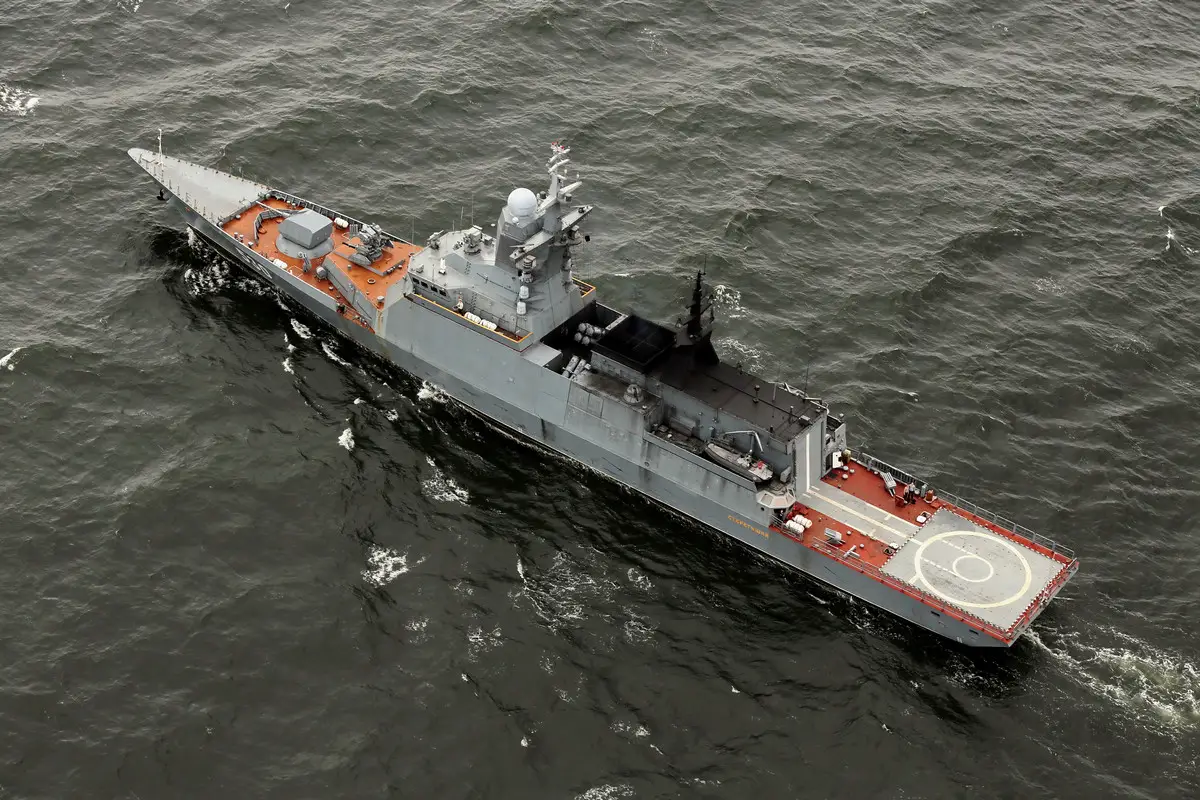Russian Defense Ministry and the Amur Shipyard in the Russian Far East have signed a contract on building six Project 20380 and 20385 corvettes. The Project 20380 and Project 20385 corvettes will enable the Russian Navy to boost the efficiency of detecting and eliminating enemy submarines, surface ships and vessels and protect naval bases, the coastline and sea lanes. In compliance with the terms of the contract, the Pacific Fleet will receive two Project 20380 and four Project 20385 corvettes in 2024-2028.
The corvettes under construction in Russia today are unrivaled in the world by some operational characteristics and armament and have vast upgrade potential. These are advanced warships outfitted with the latest multi-functional radars, Redut surface-to-air missile systems and Uran anti-ship missile launchers (Project 20380), Paket-NK anti-submarine warfare complexes and the universal shipborne launchers (Project 20385) for Kalibr-NK cruise missiles and eventually for Tsirkon hypersonic missiles.

The Steregushchiy class (Vigilant class), Russian designation Project 20380, is the newest class of corvettes being built for the Russian Navy. Designed by the Almaz Central Marine Design Bureau, subsequent vessels were built to an improved design (Project 20381), incorporating the Poliment-Redut SAM system. The ship full displacement and dimensions are large for a corvette, thus it is designated as a frigate by NATO. The export variant is known as Project 20382 Tigr.
The Gremyashchiy class (Thunderous class), Russian designation Project 20385, is an advanced development of the Steregushchiy-class corvettes of the Russian Navy. This follow-on project was designed by the Almaz Central Marine Design Bureau in Saint Petersburg. The first ship was laid down on 26 May 2011 and the official laying down ceremony took place on 1 February 2012. Gremyashchiy-class corvettes are very large multipurpose vessels, designed to complement the Steregushchiy class already being commissioned with the Russian Navy.















